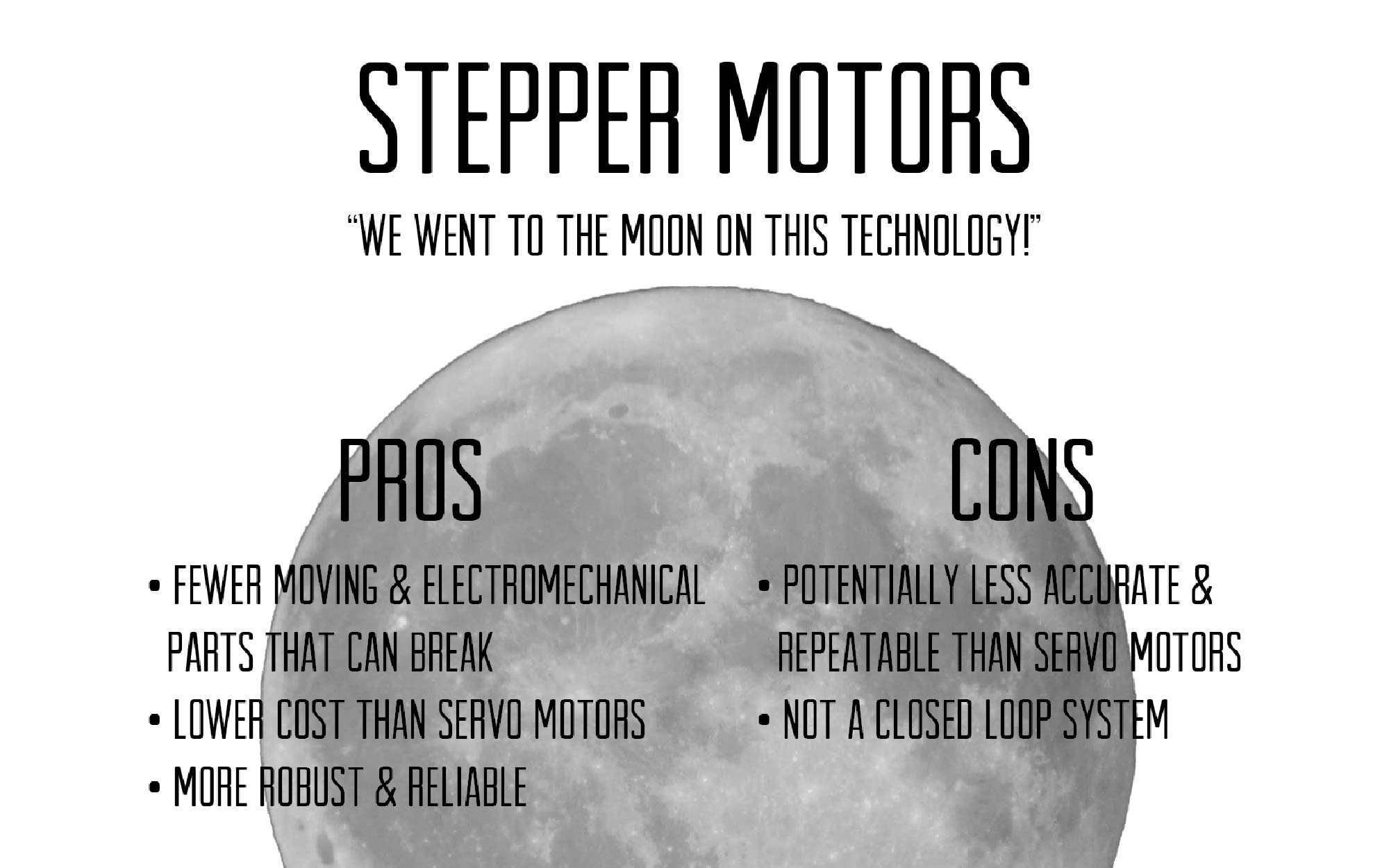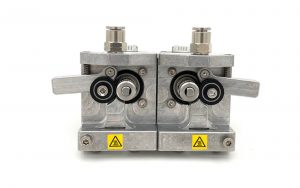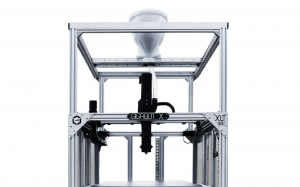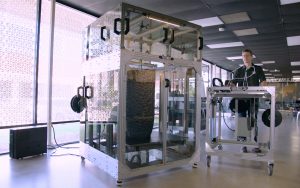One question we sometimes get relates to our choice to use stepper motors over servos. We’d like to explain our rationale behind that, as well as why we personally prefer stepper motors to their servo counterpart.
I think the biggest advantage for servo systems is its ability to produce higher levels of torque at high RPM whereas stepper motors produce the most torque at low RPM. You might want to look into something similar to propshaft services for more information on what might be able to help. More torque at higher RPM means having a higher degree of certainty of achieving the desired position in high speed movements, i.e. accuracy and repeatability. If you have any more questions about servo motors or just need a repair check out the Servo Motor Repair Experts. In order to achieve potential benefits of closed loop control you must be willing to make some trade-offs:
- Increased cost
- More parts and more complicated system (ie more parts that can break)
- Decreased low end torque and power
Stepper motors on the other hand give time-proven reliability at a lower cost and provide a more robust system with fewer moving and electromechanical parts that can break. Some will point to servo closed loop control as being superior to steppers because it can correct positional errors should they happen. This may be helpful in traditional manufacturing technologies, but I challenge that a great majority of print failures and positional inaccuracies are caused by the 3D printer operators’ (in)ability to anticipate and control the thermodynamics occurring during the additive manufacturing process.
All plastic shrinks as it cools. Parts that warp and curl can become dislodged from the print surface, cause interference with the print head, and result in a loss of positional accuracy. Here are two reasons it does not help to have closed loop servo control: 1) If the part is warped and dimensionally deformed then the part will be scrapped anyway 2) If the part comes loose from the print surface and effectively causes the print head to loose position relative to your part, then your part will be scrapped. In the majority of causes of print failure, servo control has not saved your part.
If the size of the stepper motor is correctly chosen based upon the loads of the system, and appropriate limits are placed on acceleration and velocity, you will have the same reliability as a closed loop system. I have two large CNC mills driven by stepper motors that will drive a 1/2″ EM through steel at amazing rates machining parts to greater than 0.001″ tolerance. Stepper motors – we went to the moon on this technology!
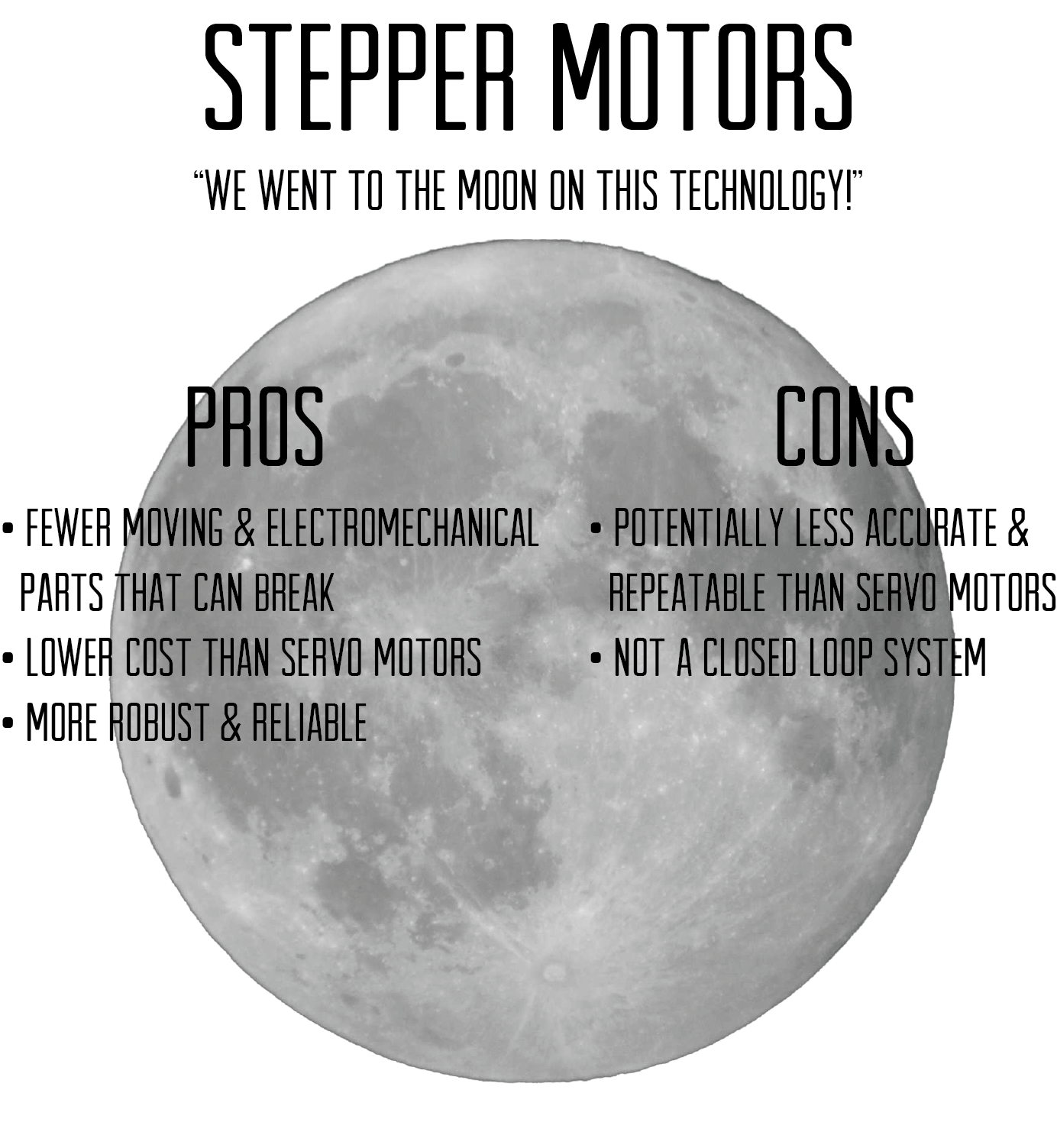
Matthew Fiedler
Blog Post Author
